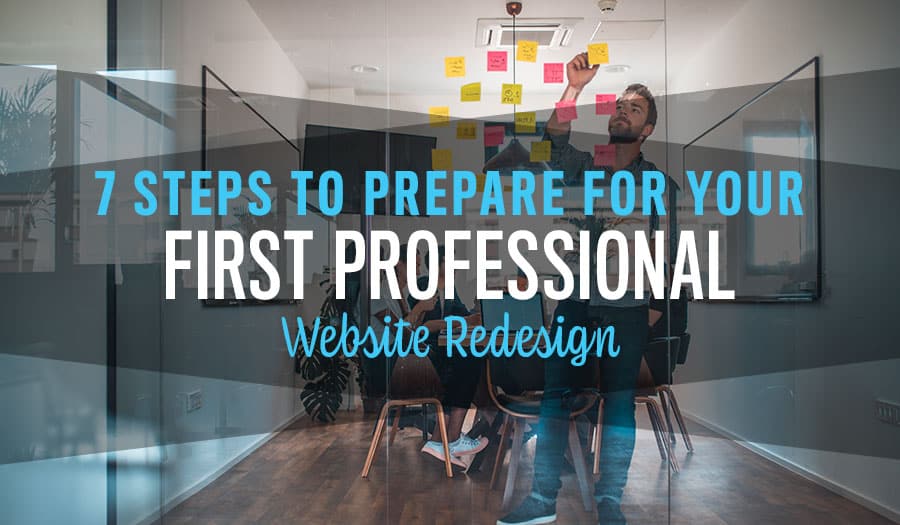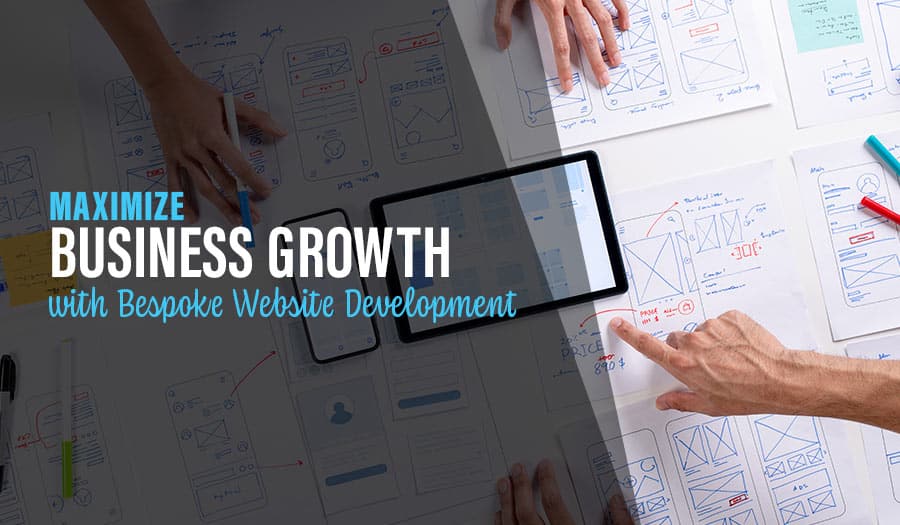That free Wix template won’t last your business forever. As your business grows, your online presence will also need to lift, and you may consider getting a professional WordPress website. Here are 7 Steps to Prepare for Your First Professional Website Redesign.
Success will pay off. According to a study by Adobe, organisations driven by web design are 69% more likely than their peers to exceed their business goals significantly. That’s probably why, according to the same study, 73% of companies invest in web design to differentiate their brand.
Following that same path means hiring the right professional to complete the project and represent your business in its best light. But, in the immortal words of Rob Base and DJ EZ Rock, it takes two to make a thing go right.
Hire the right web designer, and you have expertise and experience on your side. They won’t know your business or business goals nearly as well as you do. This working relationship requires effort and insight on both sides.
Planning truly wins the game here. While your web development partner brings the technical and design expertise, you can trump with priorities, audience insights, and business history. These 7 steps can help you prepare for your first professional website redesign and maximise your chances of success.
7 Steps to Prepare for Your First Professional Website Redesign
- Perform Competitive Research
- Gather Inspiration through Real-Life Examples
- Analyse Your Current Website
- Define Core Goals
- Build a Wishlist
- Establish a Timeline
- Prepare all Necessary Content
1. Perform Competitive Research
No website exists in isolation. When your audience looks for you, they likely come across your competitors’ online presence. Do you know what those websites look like?
Now is the perfect time to check it out. A number of tools can help you analyse other websites. The right partner can even help you or even drive this step. Before you get started, though, it pays to define a few parameters that you can judge on every website you encounter:
- How complex is the navigation?
- How easily can you gauge the core business of the website you’re checking out?
- What audience does the site seem to be written towards?
- What keywords are prominent on each website you analyse?
- What stands out positively at first glance?
- What stands out negatively at first glance?
- How many clicks did you need to go from first encounter to contact and/or conversion?
- What types of content are featured on the website?
You can add more factors as needed. The key here is to find commonalities in how you judge each website. That way, you can gather the intel you need in a structured way to find your differentiation opportunities.
2. Gather Inspiration through Real-Life Examples
In many ways, this step blends with the first. As you begin to browse the web, start looking for features, layouts, and visuals that inspire you. Your website doesn’t have to take on these features in an identical fashion. At the same time, they can be invaluable in helping you explain your vision and preferences to the designer.
Check out the visual nature of the Mercedes Benz website, highlighting the brand’s signature vehicles from several angles. Brands in any industry can duplicate this type of streamlined, simple look.
PayPal offers a very different experience, managing the complexity of multiple audience types in a way that makes it impossible to get lost navigating through. A complex page hierarchy is reduced to four simple navigation items that guide the user exactly where they want to go.
These inspirations are everywhere. You don’t even have to go out of your way to find them. As you browse the web regularly, simply note items you love on the websites you frequent.
3. Analyse Your Current Website
It’s good to start with the websites of others to find inspiration and set the context. At the same time, you need to make sure that you analyse your web presence as well. This exercise helps you define your audience based on current web users while unearthing potential weaknesses.
Let’s start with the audience. Google Analytics helps you find the demographics, geographic areas, and even interests of your average visitor. Make sure it matches with the target audience defined in your business plan. If it doesn’t, start investigating why and why your website might attract the wrong audience.
Of course, your analysis should go beyond that step. Start using the same parameters outlined in the competitive research above to see how your online presence compares. Then, go beyond that step to answer these questions:
- How long does your website take to load? Delaying your loading time even by 0.1 seconds can cause a 7% drop in conversions.
- What are your least-visited web pages, and do you know why? What are your most popular pages?
- How does your audience typically get to your website? What are their most common sources?
- Is your website mobile friendly? With 50% of global online traffic now coming from smartphones and tablets, it has to be.
- What are your most common exit pages, and do they follow a conversion or are you losing users beforehand?
Heads-up: especially with some of the more complex questions above, your web design firm can help. The right partner will even drive the process and just need your input. Either way, it’s vital to take these steps in order to find your current website’s weaknesses and points of improvement.
4. Define Core Goals
What, exactly, does your web redesign need to accomplish? How do you use your website to drive your business forward and encourage growth?
Don’t limit yourself to one goal. Instead, find a few that are closely related to your larger business goals. These might include:
- Keeping visitors on your pages for longer.
- Increasing conversions to leads or customers.
- Establishing credibility as an expert in your industry.
- Becoming more visually attractive.
- Aligning more closely with your core brand and business.
- Improving overall user experience.
The list goes on. The more tangible your goals are, the better. That way, you can make sure that you can measure the success of your website over time.
4. Build a Wishlist
From the competitive research, inspiration, and internal web analysis, you can build a wishlist of the items you would like to be included in a new design. Don’t get married to any items yet; in the larger context, they might not make sense. Still, it’s an important first step to set expectations.
Prioritise your wish list as possible. Absolute must-haves should not be equal to extra features that might make a small impact on conversions a long way down the road. And of course, anything directly connected to your core goals should get preferential treatment.
Finally, it makes sense to ask other organisation members about their preferred items. Not all of them might make it into the final design, but you might come across ideas from end users and various departments outside of marketing the business that you haven’t yet considered.
6. Establish a Timeline
When, exactly, does your website redesign need to be finished? Do you have any landmark events to work towards that absolutely need to be taken into consideration? This is the time to define exactly what that timeline might look like on your end.
Any eCommerce retailer, for example, probably won’t want to be under construction for the Holiday Season. A ski shop should probably be closed during summer, not winter. Your web designer will not be as familiar with these cycles as you are, so it’s up to you to educate them accordingly.
Don’t get caught up in the details of a web design timeline. That’s what your partner will build out. Instead, focus on the peak areas during which your website will need to be live and ideally redesigned. Then, work with your partner towards accomplishing that goal. The average website takes between 8 and 15 weeks to build, so you’ll need to work backwards from your timelines.
7. Prepare all Necessary Content
Finally, start preparing the content that will live on the new website. Chances are this step will not be comprehensive. After all, you might not yet know exactly what pages will be built out, what keywords you will need to optimise your website pages for, and so on.
Still, it makes sense to get started. You will likely have an About Us page, which more than half your audience expects and will check out quickly. That might include team bios that need to be written. Your contact information will need to be updated, as will the product information.
Now is the time for preparation. Rather than waiting until the pages are ready to be built, doing the work on this area early will reduce waiting time and potential delays.
Are You Ready to Build a Better Website?
Redesigning your website, if you want to get it right, is no simple task. You won’t be able to rely on your development partner to do all the legwork. Instead, some serious work will come your way as well. The more you do early, the better you will be prepared for the process.
You’re not alone in that process. Find the right web design partner, and you can expect help and even leadership in many of these steps. At Pixel Fish, for instance, we always help our clients perform competitive research and analyse their own websites, using some of the best tools available. It’s not all on you – but it still needs to be done.
Competitive research, inspiration, and analysing your website will help set the goals and wishlist. A timeline can help to set expectations while building the content early gives you more wiggle room for adjustments. Together, these steps help you maximise your opportunities and the potential ROI you can get from a brand new website.
Ready to get started? Contact us today to begin the conversation and start preparing for a full and effective redesign.
Let Sydney’s leading Web Design Agency take your business to the next level with a Pixel Fish Small Business Website.
Check out some of our latest Website Design projects.
Further Reading:
Tips For Creating A Sitemap For Your Business Website
Further Information
What is business website hosting and why do I need it?
SEO: Pro’s and Con’s of Organic vs Paid Search Marketing
Which Social Media Channels Should Your Business Focus On?
5 Reasons Why Running an Online Business Has Become So Appealing
10 Signs Your Website is Out of Date
Why a Single Page Website Could Be the Perfect Launch Pad for Your Small Startup Business



